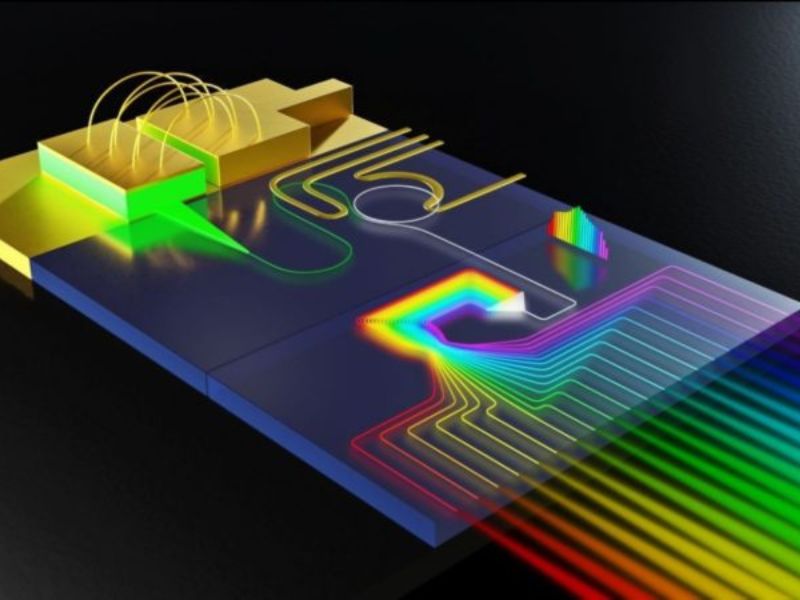
Silicon photonic chips can emit light on their own, boosting the development of optical communications and CPO (Consumer-to-Poly) technologies.

TechNews Report, October 8, 2025
Author: Su Ziyun
Author: Su Ziyun
A recent study published in *Nature Photonics* by Michal Lipson's team at Columbia University has successfully implemented a high-power "frequency comb" light source on a silicon photonic chip. This technology can generate dozens of wavelengths of light simultaneously with a single laser, replacing the traditional optical module design that requires multiple lasers, bringing a new breakthrough to high-speed optical communication in AI and data centers.
High-Power Laser "Purifies" Multi-Wavelength Light Source
While silicon photonic chips can currently integrate optical waveguides, modulators, and detectors (such as the existing CPO architecture), they still rely on external lasers for light supply, and different wavelengths are required. The key to Lipson's team's work is the ability to directly generate stable multi-wavelength light sources on the chip.
The researchers chose multimode laser diodes as the high-power light source. Although these lasers have extremely high brightness, their output light is usually quite chaotic. The team therefore designed a "locking mechanism" to make the output beam more stable and pure, and reshaped it through a silicon photonic structure to give the light higher stability and coherence.
After this "purification," the nonlinear optical effects within the chip further split the single beam of intense light into multiple evenly spaced wavelengths, forming a so-called "frequency comb" structure. The final result is a miniature light source that combines high power and high stability, requiring only a single laser to output multi-channel light, with a smaller size and higher efficiency.
Paving the Way for Optical Interconnects in Data Centers and AI
As artificial intelligence and high-speed computing drive up the power demands of data centers, optical interconnects are becoming key to reducing power consumption and increasing transmission speeds. Previously, an optical module often required more than ten lasers, resulting in high costs and heavy heat dissipation burdens. The Lipson team's new design can replace an entire row of laser modules with a single chip, and can be applied to the miniaturization of CPO (Co-Packaged Optics) packaging and server optical communication modules in the future.
The research team pointed out that this technology, in addition to its applications in data centers, can also drive the development of new optical devices such as spectrometers, quantum sensors, and LiDAR. As silicon photonics technology further integrates light source, transmission, and computing functions, the industry is moving towards a new stage of higher energy efficiency and greater integration.
Image Source: Columbia Engineering
【Disclaimer】
The content of this article only represents the author's personal views and has nothing to do with Creating.
The content, text description and originality have not been verified by this site. This site does not make any guarantee or commitment to this article and all or part of the content, authenticity, completeness, and timeliness. It is for readers' reference only. Please verify the relevant content yourself.
The content of this article only represents the author's personal views and has nothing to do with Creating.
The content, text description and originality have not been verified by this site. This site does not make any guarantee or commitment to this article and all or part of the content, authenticity, completeness, and timeliness. It is for readers' reference only. Please verify the relevant content yourself.
Creating Nano Technologies, Inc.
59 Alley 21 Lane 279, Chung Cheng Road, Yung Kang City, Tainan, TAIWAN
TEL:886-6-2323927 FAX:886-6-2013306 URL: http://www.creating-nanotech.com
59 Alley 21 Lane 279, Chung Cheng Road, Yung Kang City, Tainan, TAIWAN
TEL:886-6-2323927 FAX:886-6-2013306 URL: http://www.creating-nanotech.com
